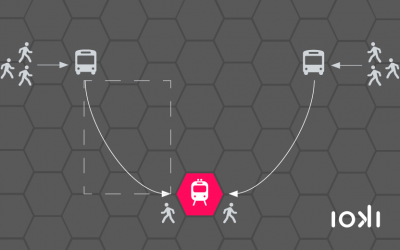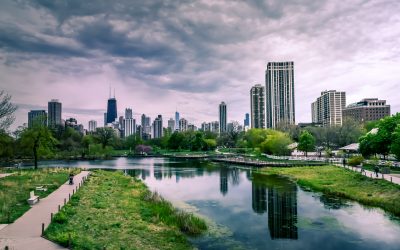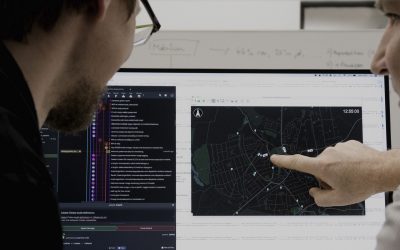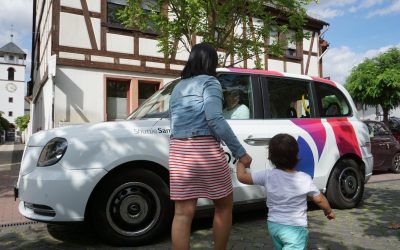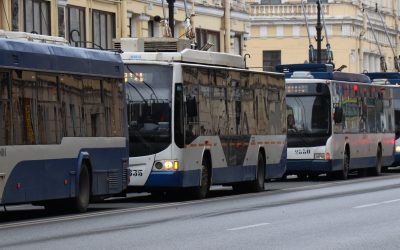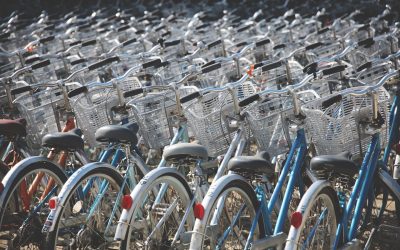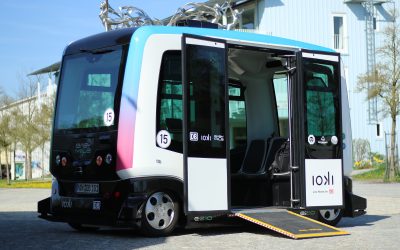Mobility Analytics: Analysing public transport systems
Preparation is half the battle: This also applies when planning new mobility offers. To ensure that they build optimally on existing solutions, it is advisable before any system changeover to first take an initial stock in the form of an analysis of the public transport system.
City of the future: What will our mobility look like?
Green, environmentally neutral and connected – these are the demands on the city of tomorrow. At the same time, people’s quality of life is to be improved and the ecological footprint reduced. Experts from all over the world are thinking about the so-called Smart Cities. In all scenarios, one thing remains clear: everyone wants to remain mobile.
It’s all about data: Interconnected mobility data for more customer focus
Whether socio-demographic or geographical data, information from travel diaries from household surveys or flows of people from mobile phone data – mobility-related data and information are available in large quantities in times of digitisation, but are still too rarely used to develop user-centred services and offers.
Call-collecting taxi – A new approach to proven concepts
What began in 1977 in Friedrichshafen is today generally known as on-demand transport: In a large-scale experiment, the people of Friedrichshafen were the first in Europe to look for a solution to adapt the existing public transport system to meet demand – thus heralding the birth of the Rufbus.
IMN Business Club: Mobility in rural areas
Starting with the question «Solutions of urban mobility as a blueprint for rural areas?» we dedicated our third ioki Mobility Network Business Club yesterday evening in a relaxed living room atmosphere and together with our guests of the to the topic of rural mobility.
Ride-hailing: Universal remedy or climate killer?
Owning a private car has long since ceased to be the norm in cities. With good public transport connections, new forms of mobility such as e-scooters or ride hailing services such as Uber and Co., you can get from A to B flexibly, comfortably and quickly even without a car.
Free public transport – Our neighbours show the way
The idea of establishing free public transport is currently on everyone’s lips. But is this THE solution? Luxembourg, our neighbouring country and hardly bigger than Saarland, is leading the way and with its 600,000 inhabitants it is the first country in the world to introduce free local public transport. What do people hope to gain from the experiment?
Bye car, hello traffic turnaround!
The hours of motorised individual transport seem to be numbered – at least in the metropolises of this world! The recently published study «Mobility Futures» by the Kantar market research institute shows that by 2030 the proportion of car drivers in cities will fall from current 51% to 46%.
Ideas for more mobility in the countryside
Around 16 million people (as of November 2018) live in rural regions throughout Germany and it is still not easy for them to get from A to B. Without an own car, they often do not get far. This is because bus and train connections and the associated timetables are often not designed as needed and are not flexible.
Autonomous driving – a brief stocktaking
Anyone who thought of the year 2020 20 years ago probably had in mind, autonomous cars that would be romping all around on the streets. Today’s reality, however, teaches us otherwise and proves that the situation is much better: Although we are continuously on the right track, there is still no question of autonomous vehicles dominating the road traffic.
What is … the difference between AST and ALT?
The abbreviation AST in German means “Anruf-Sammel-Taxi”, in English “call-collective-taxi” and ALT means “Anruf-Linien-Taxi” – call-line-taxi. Both are demand-oriented special forms of public transport in urban, local or even regional traffic. With a small number of passengers, a large bus in regular service is uneconomical. That’s why there are the AST and ALT services – they are only in operation there is need and demand – «on-demand» in a manner of speaking.
Does Generation Z even still have a driver’s license?
In times of Netflix, Spotify and Co. almost everything is shared instead of owned. It’s not surprising that this trend is not only changing our consumer behaviour but can also influence our mobility habits. Current developments show that, despite the possibility of accompanied driving from the age of 17, young people get their driving license later: In 2012, 4.6 million car driving licences were still being issued, compared with over ten percent fewer in 2017.

